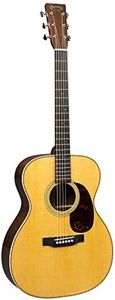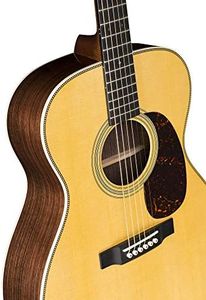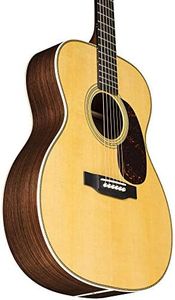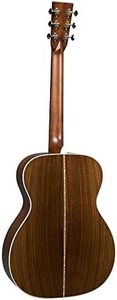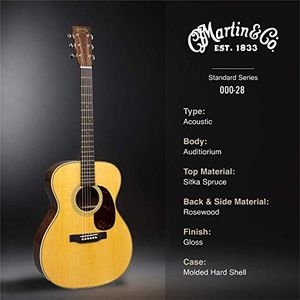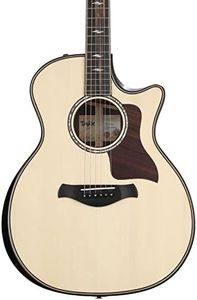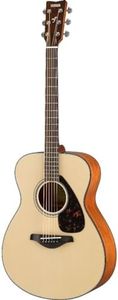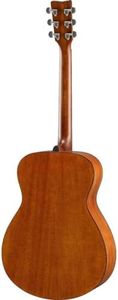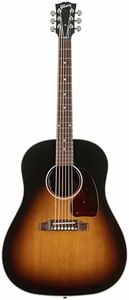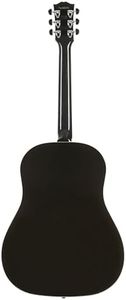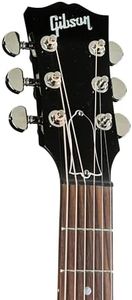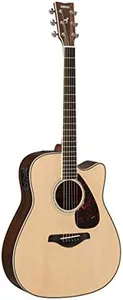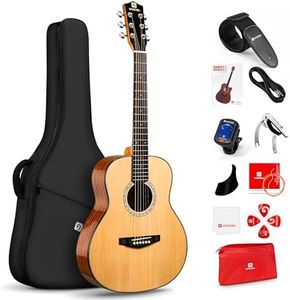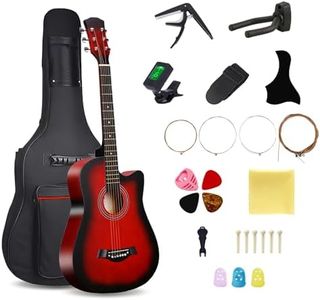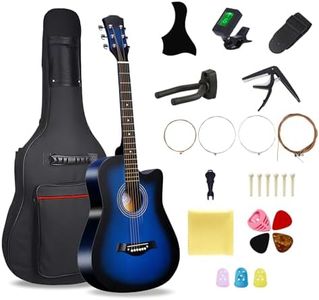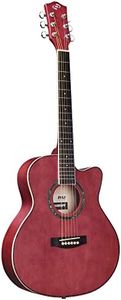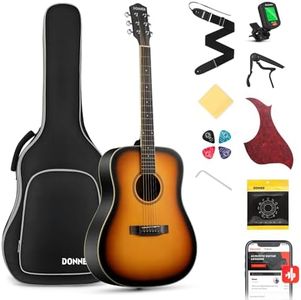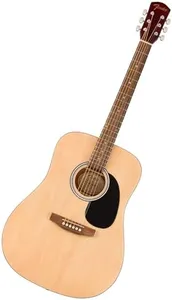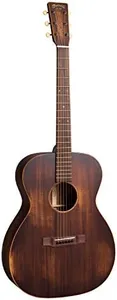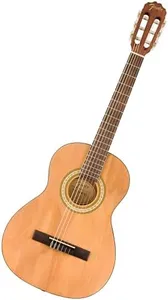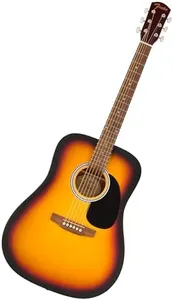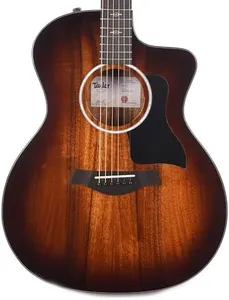10 Best Acoustic Guitars 2025 in the United States
Winner
Martin Guitar Standard Series Acoustic Guitars, Hand-Built Martin Guitars with Authentic Wood 000-28 Natural
Martin Guitar Standard Series Acoustic Guitars, Hand-Built Martin Guitars with Authentic Wood 000-28 Natural
Chosen by 1396 this week
Taylor 814ce Builder's Edition Acoustic-electric Guitar - Natural Gloss
Taylor 814ce Builder's Edition Acoustic-electric Guitar - Natural Gloss
YAMAHA FS800 Small Body Solid Top Acoustic Guitar, Natural, Concert
YAMAHA FS800 Small Body Solid Top Acoustic Guitar, Natural, Concert
Gibson Gibson Acoustic J-45 Standard 2019, Vintage Sunburst
Gibson Gibson Acoustic J-45 Standard 2019, Vintage Sunburst
Yamaha FGX830C Solid Top Cutaway Acoustic-Electric Guitar, Natural
Yamaha FGX830C Solid Top Cutaway Acoustic-Electric Guitar, Natural
Fender FA-25 Dreadnought Acoustic Guitar, Beginner Guitar, with 2-Year Warranty, Includes Free Lessons, Natural
Fender FA-25 Dreadnought Acoustic Guitar, Beginner Guitar, with 2-Year Warranty, Includes Free Lessons, Natural
Martin Guitar 000-15M StreetMaster with Gig Bag, Acoustic Guitar for the Working Musician, Mahogany Construction, Distressed Satin Finish, 000-14 Fret, and Low Oval Neck Shape
Martin Guitar 000-15M StreetMaster with Gig Bag, Acoustic Guitar for the Working Musician, Mahogany Construction, Distressed Satin Finish, 000-14 Fret, and Low Oval Neck Shape
Fender FA-25N 3/4 Size Nylon String Acoustic Guitar, Beginner Guitar, with 2-Year Warranty, Perfect Beginner Guitar for Kids that is Easy on Fingers, Includes 3 Months of Free Lessons, Natural
Fender FA-25N 3/4 Size Nylon String Acoustic Guitar, Beginner Guitar, with 2-Year Warranty, Perfect Beginner Guitar for Kids that is Easy on Fingers, Includes 3 Months of Free Lessons, Natural
Fender FA-25 Dreadnought Acoustic Guitar, Beginner Guitar, with 2-Year Warranty, Includes Free Lessons, Sunburst
Fender FA-25 Dreadnought Acoustic Guitar, Beginner Guitar, with 2-Year Warranty, Includes Free Lessons, Sunburst
Taylor 224ce-K DLX Grand Auditorium Acoustic-electric Guitar - Tobacco
Taylor 224ce-K DLX Grand Auditorium Acoustic-electric Guitar - Tobacco
Our technology thoroughly searches through the online shopping world, reviewing hundreds of sites. We then process and analyze this information, updating in real-time to bring you the latest top-rated products. This way, you always get the best and most current options available.

Our Top Picks
Winner
Martin Guitar Standard Series Acoustic Guitars, Hand-Built Martin Guitars with Authentic Wood 000-28 Natural
The Martin Guitar Standard Series Acoustic Guitar 000-28 in Natural finish is a high-quality instrument, ideal for serious players and enthusiasts. The guitar features a 6-string configuration with a spruce top, which is known for delivering a bright and resonant sound. The ebony fingerboard complements the spruce top well, providing smooth playability and durability.
The body of the guitar is crafted from rosewood, known for its rich, warm tones and excellent projection. The combination of rosewood back and sides with mahogany ensures a balanced sound with deep bass and clear highs, making it versatile for various music genres. The neck of the guitar is made from mahogany, providing strength and stability, while the neck profile and scale length are designed for comfortable playability.
The nut width is standard, making finger positioning and chord transitions easier for players of different skill levels. One notable aspect missing from this model is built-in electronics, which means it is purely an acoustic guitar without the capability for direct amplification. This might be a drawback for performers who prefer a built-in pickup or preamp for live performances or recording.
With dimensions of 47 x 20 x 9 inches and a weight of 17.6 pounds, the guitar is relatively easy to handle, though some may find it slightly heavy. This Martin 000-28 model is best suited for dedicated acoustic guitar players who value craftsmanship and rich, authentic tones in their instruments.
Taylor 814ce Builder's Edition Acoustic-electric Guitar - Natural Gloss
The Taylor 814ce Builder's Edition is a high-quality acoustic-electric guitar that suits players looking for a rich, versatile sound and premium craftsmanship. It features a spruce top paired with Indian rosewood back and sides, a classic combination known for bright, clear tones with warm bass response. The mahogany neck and ebony fingerboard offer smooth playability and durability. With a 25.5-inch scale length, it provides balanced string tension that feels comfortable for most players.
The fixed bridge ensures solid tuning stability, and the built-in electronics make it easy to plug in for performances without losing the natural acoustic tone. Weighing in at just over 21 pounds, it’s relatively hefty, which some might find a bit heavy for long playing sessions. It’s designed for right-handed players and uses phosphor bronze strings, which add warmth and brightness.
This guitar is best suited for intermediate to advanced players who want a professional-level instrument with excellent sound quality both unplugged and amplified. Beginners might find it pricey, but its craftsmanship and tone make it a rewarding investment for serious musicians.
YAMAHA FS800 Small Body Solid Top Acoustic Guitar, Natural, Concert
Most important from
2111 reviews
The Yamaha FS800 is a concert-sized acoustic guitar designed for players seeking a smaller body that offers comfort without sacrificing sound quality. It features a solid Sitka spruce top, which provides clear, bright tones that improve as the guitar ages. The back and sides are made from Nato wood, contributing to a warm sound, although they are less resonant than traditional mahogany or rosewood. The rosewood fingerboard and bridge enhance smooth playability and contribute to good tonal balance.
While the neck profile is not detailed, the concert body shape generally suits players who prefer easier reach and fingerstyle playing. The guitar is equipped with diecast tuners that hold tuning reliably and includes an adjustable truss rod for neck adjustments. It does not have built-in electronics, making it better suited for acoustic practice or recording with external microphones rather than live amplified performances.
The nut width and scale length are typical for this size, ensuring comfort for most hand sizes. The FS800 delivers solid build quality and a pleasing tone, making it an affordable and reliable option for beginners and intermediate players looking for a smaller-sized acoustic guitar. Players seeking a more powerful sound or built-in electronics may want to explore other models.
